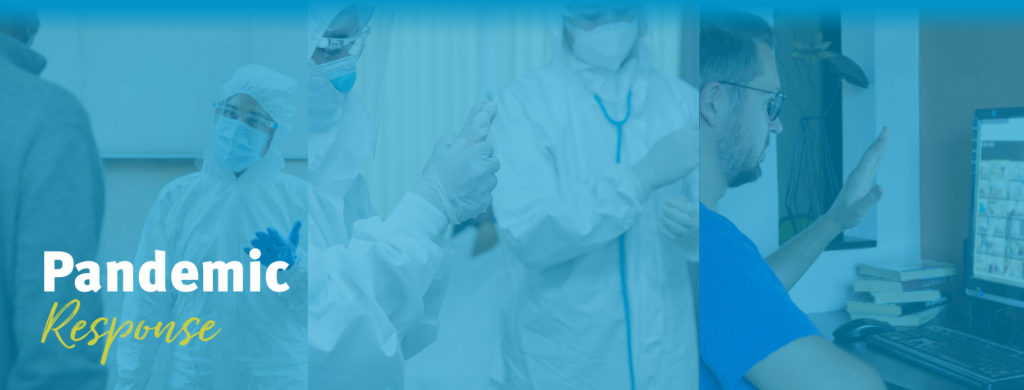
The Leadership teams of Ohio’s Hospice affiliate and associate members established a COVID-19 Task Force that began meeting daily on March 9 through video meetings, setting the tone for a response to the emergency that was based on effective two-way communications, trusting the science, evolving guidelines as more/better information became available, trust in staff and commitment to mission.
“It wasn’t just about creating policies and redesigning nearly everything on the fly. It was about calming any fears among our nursing staff, about explaining the ‘why’ behind our policies,” Wagner says.
It was also about staying focused and positive. “In every call, we talked about ‘silver linings,’ whether that was good news, lessons learned with long-term implications, or a positive story about meeting the needs of patients or community care partners,” she says.
The daily agendas were wide-ranging: infection control, PPE guidelines and supply management, clinical decision trees and algorithms, interpretation of evolving Medicare regulations, patient visit redesign, planning for COVID-19 inpatient care, guidelines and processes for visitors to inpatient units, telehealth systems and guidelines, rapid admissions response, work-from-home protocols, changes to human resources pay and policies specific to the health emergency, utilizing Ohio’s Hospice chaplains, social workers and grief and bereavement counselors to care for staff, volunteers, community care partners and community members affected by the crisis … and much more.
Much of the focus was on communications. “In our daily meetings, we opened up the floor so that anyone, anywhere could ask a question,” Wagner explains. Like many healthcare providers, Ohio’s Hospice created a dedicated intranet site to host essential information about the response to COVID-19. What was different for Ohio’s Hospice is that the site was open to the public: https://intranet.ohioshospice.org/coronavirus.aspx.
“You can’t get more transparent than that,” Wagner observes.
Ohio’s Hospice also decided to share as much of the information it was developing in as many creative ways as possible with community care partners, patients and families, and the community. “Our goal was to be as flexible and transparent and easy-to-understand as possible,” says Craig Schrolucke, senior director of Mission Engagement and Communication for Ohio’s Hospice. “We always kept in mind the end user — whoever was picking up that piece of collateral or seeing a forwarded email that we had created.”
Some of the most popular items were technology “How-To’s” to help inexperienced users master the arts of video chats and virtual meetings on any device and any platform. How to don and doff PPE was equally popular but even more essential from a health and safety standpoint. “One thing our response to the pandemic has done, was to demonstrate in real time and on a daily basis the value of our affiliation, in having Ohio’s Hospice,” Wagner notes. “We not only shared resources, but we learned from each other, supported one another. That is exactly the way the model is supposed to work.”

